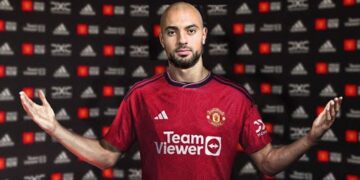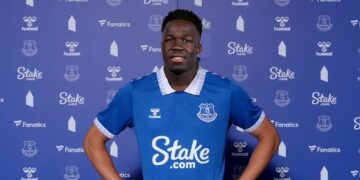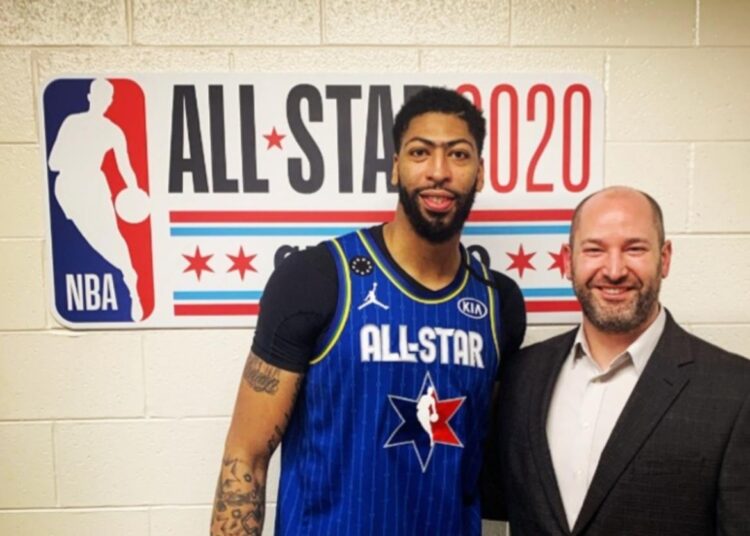Anyone who has watched an NBA basketball game knows the script for the final minutes. It goes like this: the margin is either too wide for a team to try and make a comeback or the game is so close that there is either a chance at a last-second buzzer-beating shot or the team that is losing has to attempt to repeatedly foul the leading team in the hopes they miss their foul shots and the losing squad can attempt a miraculous comeback. In the end, the result is often a lot of foul shots signifying nothing—they merely draw out the inevitable. It’s common, thus, that the final, say, 45-seconds of an NBA game can last 20 minutes with all the breaks for free-throws.
But Nick Elam had an idea to change all that. Ever since 2007, Elam has been working to flip the game-ending script with his “Elam Ending.” With this concept, the final quarter of a basketball game is not timed (or at least a large chunk of it is played without a clock). Instead, there is a “target score” added to the leading team’s total. And to win the game, either team has to hit that final target score, rather than hold off its opponent from coming back as the seconds tick away.
In this interview, we caught up with Elam to ask him about the origins of his idea, which has been used in various leagues around the world, including most recently in the NBA All-Star game since 2020. We also asked what his plans are for the concept moving forward, how he goes about promoting it to new leagues and more.
You’re a professor at the serendipitously-named Ball State University, which is located in Hoosier country in Muncie, Indiana. Just quickly, what are your responsibilities there?
Nick Elam: So, I am in the department of educational leadership. So, all of our students in our program are graduate students and they are pursuing graduate degrees, obviously, to become school principals, school superintendents, school leaders. So, it’s my job to prepare them to be good school leaders. And that stems from my own career as a school leader. I used to be a school principal in Ohio and before that I was an assistant principal and athletic director. And I started out in education as a high school math teacher.
When did you first find basketball and how has your relationship to the game grown?
NE: I started to enjoy basketball probably when I was around five or six years old. So, this would have been the late 1980s. My mom was a graduate at Indiana University and so I was raised on Bob Knight and the Hoosiers. So, that was the team that I rooted for most passionately as a youngster. But yeah I’m just a really avid basketball fan ever since that age. I’ve enjoyed it all the way up until this day.
How do you define the Elam Ending today and what do you appreciate most about it? What makes you believe in it so strongly?
NE: Yeah, so the way I define it – the nutshell explanation is that the Elam Ending is where you play most of the game with a game clock and you play the last part of the game without the game clock. The idea is not meant to change basketball, it’s to do the opposite, to preserve a more natural and exciting style of play. And there are different versions of it. Because when you say you’re going to play the last part of a game without a clock, it begs two questions right off the bat, which is, well, when do you shut off the clock and what do you play to?
Well, there are different versions for different leagues and events and that’s part of the original design, for it to be customizable that way, based on a league’s preferences or style of play, whatever it might be. So, it was never meant to be static and locked into a certain version. But what I like most about it, again, it is what I would say – it has the qualities that are true for the best kinds of innovations, which is that it’s practical and it’s cool.
So, it’s practical – and really the practical part was what made me start to explore this concept, which is how does it, what is a way to compel teams to adhere to the fundamental objectives of the sport down the stretch of a basketball game? How can we get teams, whether they’re winning or trailing, whether they’re on offense or defense, to play a more authentic style of play? What could allow a trailing defense to just play good defense rather than have to desperately foul? What would compel a leading offense to continue to play assertively rather than play a very passive stalling style? What could allow both teams to get their best look and their best shot when the game is on the line, rather than deciding games with blooper-reel shots and things like that?
All those kinds of things – the practical side – is what got me started on this. And I still love it for that reason because it’s been effective delivering on the practical side. But where I had some expectations originally and where it’s exceeded my expectations and where I’ve come to grow and love this idea even more and what I think has really won people over with this idea is the cool side of it. The part of it that’s not as easily measurable or quantifiable, the part you have to be in a gym for to really see it and hear it and experience the Elam Ending down the final stretch of a game.
The intensity, particularly the defensive intensity, how it just ramps up from the final stretch of the game leading up to, in many cases, a sudden death finish, and a walk-off shot that matches or sometimes exceeds the excitement of a buzzer-beater. And that’s true in games that end in, like I said, a sudden-death finish but that’s also been true in a lot of games that end with a margin that’s five or six or nine or 10 points – you know, we’re seeing that kind of exuberance and the celebration and that kind of a memorable ending – the circumstances don’t have to align so perfectly to get that great finish compared to a time finish, where almost everything has to go perfectly right to get a great finish.
What is it like for you to promote this idea? On one hand, if it’s permanently adopted by the NBA it’s a major feather in your cap. But on the other, I get the sense you care more about it happening organically. So, what is it like to walk that line, as the idea’s inventor?
NE: It’s a great question and it takes me back to the first 10 years of this project because that’s really its own chapter. From the year 2007 when I first thought of this idea and, again, in the early weeks and months, it was really out of just an intellectual curiosity. I was very skeptical about the idea and I started to explore it, like, what’s the fatal flaw here? Why won’t it work? And as I really started to scrutinize it as the weeks and months went on, I really came to believe that the idea was necessary and sound and had potential to be cool.
Once I convinced myself that the idea had merit, then the really tough part started, the part that I didn’t know would take 10 years, and that was trying to convince others in the basketball world that the idea had merit. So, that first 10-year stretch was – all sorts of different emotions and best-case, worst-case thoughts racing through my head. Because even though I really believed in this idea on paper – I mean, one, I always had to be prepared for the possibility that it never was going to get off the ground, that it was never going to be implemented or even experimented with anywhere. And then I also had to prepare myself for the possibility that it wasn’t going to work as well as I thought it would. That it would be a flop.
When I first got to see this idea at TBT, The Basketball Tournament, in 2017, for 11 games over the course of one weekend, even though this was a dream come true happening, I also knew there was a possibility that that might be it. It might be the beginning and the end of this concept if it wasn’t successful. But what was so encouraging about that weekend was that it was evident right from the beginning, from the initial games, that the idea, like I said, was delivering on the practical side in all of the ways that I expected, and it was delivering on the cool side in ways that even exceeded my high expectations.
I knew then that the concept was going to live on someway somehow somewhere beyond that first weekend. That was such a relief, it was so affirming that first weekend. So, in promoting this idea, for a long time, there were reservations. Because you didn’t know who the concept was going to end up in the hands of, you know, whether it was going to be a well-run, well-organized league or not. But it ended up in the hands of TBT, which is a very well-organized event at its level, a very high-quality play, a really good place for this idea to start and get good quality testing, basically.
Now the reservations in promoting the idea are not as strong there because, yeah, the idea has been able to prove itself. So, again, it’s just really cool that now the idea has a chance to speak for itself rather than just me speaking on its behalf out there. And one thing that makes – the coolest, coolest part maybe about this whole pursuit, this whole dream that still lives on, is that I’ve never had to be phony about this ever. Because this is a concept that I truly believe in, in every aspect.
I’ve never had to try to do any kind of a phony sales pitch in any regard because I believe in it that much. And I’m not sure how many people can say that about their dream. I’m sure at some point people somewhere along the line have to, I don’t know, compromise their integrity, or whatever it might be. Or embellish their beliefs, or however you want to say it. But with this concept, I believe in it that much that I’ve never had to be phony about it. That’s the best kind of a dream you can have.
When it comes to people who are for or against the Elam Ending, is there any kind of a through-line? Meaning, do more “old school” NBA people dislike it? Are younger fans more in favor it?
NE: I love this question. Again, that’s one of the most fascinating things about this is that there has not yet – maybe there will be at some point – but at this point, there does not seem to be a profile of who seems to like it and who doesn’t. There certainly are people on both sides of the debate, but whether it’s age, race, gender, political leanings, level of experience in basketball, if you told me a profile of someone and asked me “Do you think it’s likely that person likes or dislikes the Elam Ending?” I wouldn’t be able to tell you. So, that’s something I really think is cool.
But one thing I will say that was really heartening early on was some of the strongest proponents early on, when people were first able to see this and voice their opinion about it, I thought it was really cool that a lot of people who you would probably consider old school seemed really embraced the idea. People who were longtime high school coaches, things like that, just loved that it got back to a more authentic style of play and spoke in favor of the idea. And that was, again, really cool. I wasn’t sure what to expect, but I don’t think it was that, necessarily.
It’s funny, as we’re talking, I’m reminded that most of the basketball played in the world, or at least that I played growing up, does not have a timed system. Pickup games all over the world are played to a certain score.
NE: That’s one thing that I think has a good appeal about this. I know on paper it seems like a very unfamiliar, new-fangled idea, but then, yeah, at the heart of this concept – the Elam Ending is a very familiar idea. It’s how most of us grew up playing the game.
Once you came up with the idea for the Elam Ending, what were the next steps? In other words, how did the NBA get wind of it?
NE: Again, by the end of the summer of 2007, I had convinced myself that the idea had merit. So, then I started reaching out to people in the basketball world, whoever I could get contact info for, which wasn’t always easy. So, I’ve been reaching out to people in the NBA since 2007 and most of that has been one-way communication. I bring my ideas and my research to the doorstep and then I don’t know where the conversation goes from there. But again, that’s why it was really important and really cool when TBT finally started experimenting with the idea, that people got to see and hear and experience the idea rather than just reading about it on paper.
I wish I could have been a fly on the wall for all those different discussions that happened within the NBA. I wasn’t and so I won’t always know the path that it took. But yeah, I think that it’s really telling that, again, it took 10 years from conception to first implementation. But after that first implementation, it was only two-and-a-half years later that we saw literally the greatest players in the world all on one court playing under this format at the NBA All-Star game. I think it just shows how much better the concept is at speaking for itself, rather than me speaking on its behalf.
What was it like to see it during that All-Star game in 2020 and since? That must have been a thrill.
NE: As far as what it was like to see it, it was again one of those milestones in this journey, which have all been cool for two reasons. Any time it reaches that kind of a major milestone, it’s cool for one because I get to look back and think about how far this project has come along up to that point. But it’s also cool because I get to look ahead and think, wow, there is literally a lot of promise for how much this concept has yet to grow. And those are the feelings certainly that were going through my mind in 2020 when I was at the United Center to see it in person.
It was just amazing, that entire fourth quarter – well, it was this quarter-long crescendo of intensity throughout the whole packed arena. It was just amazing to see. And as far as the relationship to Kobe, it was interesting how that timeline played out. It was Thursday, January 23rd when I got the call from the NBA league office saying that this concept is going to be implemented into the All-Star game. They were thanking me for my input, my ideas. Telling me that in their conversations with the Players Association that they see a lot of merit in this concept of an untimed finish. With the version that they were going to use was actually a plus-35 [points added to the highest-scoring team’s total after the first three quarters] version for the fourth quarter. To try to match the normal scoring rate you’d see in an NBA All-Star game.
So, that was the call I got on a Thursday. But then it was only a few days later on a Sunday when Kobe died [January 26, 2020]. This was still before the league’s public announcement about the new format for the All-Star game. So then that following Thursday, I had reached out and contacted the league about the possible idea for honoring Kobe with this format.
Oh wow, that was your idea?
NE: Well, so I can’t definitively say that – I don’t know that they would have done it without me. They might have been thinking about the same idea. So, I reached out to them with the same idea, but they might have already been considering it. I don’t know. But yeah, by the time the following Thursday rolled around, January 30 I think it was, and they made the public announcement, it was a plus-24 format at that point. So, it was interesting the way that timeline played out. It was crazy.
Is there anything you want to say now about current conversations with the NBA and the league using it in the future?
NE: The fact that they’ve implemented it in the G League, I think is really promising. They don’t just do that for the fun of it. You know, when they experiment with a rule change in the G League it’s because there is legitimate consideration for it to be implemented in the NBA. One thing that’s been true of the Elam Ending, again, ever since it was implemented in the TBT in 2017, whether it’s a really prominent levels or whether it’s at the lowest grassroots level, every league that’s implemented the Elam Ending has continued to use it. Nobody’s thrown it out and decided “We’re going back to the timed format.” So, if that same trend holds, then it’s going to continue to be used in the G League and I feel confident that eventually it will be used in the NBA level, yeah.
What important tweaks have you made along the way and are there any that you’re mulling right now?
NE: Yeah, so one thing that’s part of the appeal of the Elam Ending is that it’s customizable and you can recalibrate it if necessary. So, a good example would be in the TBT when we first implemented it there, we didn’t have a bunch of scoring data from past iterations of the tournament to know what was the right starting point. So, it was really just a shot in the dark, trying to figure out what the settings should be. And initially it was eliminate the clock at the four-minute mark of the fourth quarter and then use a plus-seven format for the target score.
But we found out that we weren’t quite getting as much live ball play as what we’d want in the final stretch with the plus-seven format. So, beginning in 2019 and ever since then, it’s been a plus-eight. And plus-eight has worked out very well since then. So, that kind of recalibration I think will always go on, trying to get it to match how much basketball we want to see.
Wasn’t there also a tweak about game-ending free-throws? Not ending on two shots, but maybe one shot and the ball?
NE: In TBT, yes. And that’s been a successful tweak. It’s got a grab bag of different benefits. For one, there’s certain situations where it lets the game play out more fluidly and it makes it more likely that the game will end on a game-ending field goal. Also, I think just in general on a more broad level, it returns the emphasis back to live ball play, which is kind of the overall spirit of the Elam Ending. So, that rule does that.
It’s been successful on a micro and macro level. TBT likes it. I would love for the NBA to consider it, too. So, we’ll see. This concept was always meant to evolve. There was never any thought that the original version was going to be the final version. So, as long as basketball exists, that’s how long there is to experiment with the Elam Ending.
What is the future now? Are you looking to EuroBasket or the Basketball Africa League?
NE: You can definitely believe that any league where I can get ahold of any sort of contact info, I’ve certainly reached out to them. So, I’ve been reaching out left, right, high low, since 2007. It’s really interesting to see the path of growth that his has taken and I think there are so many different international settings. I would love to see this in the NBA. I’d love to see this in college basketball. You name it, I think it could be a good fit in a lot of places.
Forgive this perhaps personal question, but if it is implemented in, say, the NBA as a whole, do you make money off that? How does that all work?
NE: Sure, so when it comes to intellectual property or copyrights or patents or trademarks, there are some things that easily able to be protected and there are some things that are not as easily to protect. The things that I’m able to protect, I’ve done that. And there’s been a lot of cool indirect opportunities that have come from this. Certainly, opportunities to speak in many different venues. Opportunities to teach. And opportunities to share my story of persistence, positive thinking, innovative thinking, that sort of thing. In different schools and business settings, things that I continue to this day. And there’s more info on that at ElamEnding.com.
And then being the originator of this concept, the sky’s the limit for the concept itself, and I think that as it continues to grow, it’s going to continue to grow opportunities for me wherever that might. And I’ve love for that opportunity to be with the NBA. We’ll see if that comes to be. Something that I continue to be is that at some point I think somebody really influential in the NBA is going to put their arm around me and say that Nick Elam has made a really important contribution to our sport and our league, and he shouldn’t have to feel like an outsider anymore. And I think I’ll have the opportunity to feel like I’m part of the NBA family. It’s hard to predict who that might be but I think that it’s going to happen. Maybe it will be Chris Paul, maybe it will be LeBron James, maybe it will be Adam Silver. Maybe it will be Shaq or Charles Barkley, somebody like that. But I really think that somebody at some point will say that I think it’s time we regard Nick Elam as part of the NBA family.
What do you love most about basketball?
NE: Things that I love about, say, baseball and football, because I do like other sports too, is that they are able to – they build to these really consequential stages of a game, moments of a game. But sometimes it can take a really long time to build towards those. In basketball, in a lot of cases, right from the tip, it can feel like you’re going from one consequential possession right to another just a few seconds later. Back-and-forth, back-and-forth throughout the whole course of the game. And you can sustain that level of intensity for the whole game. So, I think that’s just a really cool feature about basketball.
You can follow Jake Uitti on Twitter @jakeuitti. You can buy his Muggsy Bogues biography here.
Story originally appeared on HoopsHype
Read the full article here

























